3D Universe PLA - Filament Review
Whether you are just beginning with 3D printing or have been doing it for years, 3D Universe is a company that has everything you need.
I wanted to try out a new filament to see how it would print with my popular beginner printer, the MP Select Mini. Most people who are just starting out with 3D printing have questions about what is a good filament to learn to print with.
For more info you can also watch the video i created where i go into more depth about the filament and clips of it being printed:
3D Universe - PLA - 3D Filament Review
3D Universe send me a roll of their own PLA filament for review. My goal was to show people specifics about the filament, how it will print, tips for bed adhesion, and the final result of what they can expect.
FILAMENT
This filament is perfect for someone who does a lot of 3D printing and needs a consistent, reliable filament. This PLA is something that will make repeatable parts under a wide range of settings.
3D Universe sells their PLA in several colors.
Big 1Kg roll.
Here's what it looked like when it came in the mail.
The filament itself will come wrapped air-tight and look like this.
It came on a large 1 kilogram roll for $30, as opposed to those companies that only sell 750 grams.
The overall look and feel of the filament is very consistent in size and has that typical matte finish to it. Like all PLA it is brittle in ductility. But it has a very nice feel to it. The filament is tightly wound to the roll.
3D Universe recommends that you print this at 190-210 deg C with a bed temp between 40-60 deg C. Although they say that it should adhere to a cold bed also. The advantage of PLA is its characteristic to print well under all different settings.
COMPANY
3D Universe has everything you could ever want for 3D printing. They sell printers, different brands of filament, software, kits, and more.
They also sell filament from several different companies. And they have several years of experience in selling 3D printers, filament, software, kits, etc.
With all the different types of things they sell, they do a very good job of clearly showing each filament and what it looks like.
One thing i do wish that they did would be to put the recommended printing temperature right on the roll itself. Or maybe include a sheet with the filament, with some of the settings to use to get the best prints. Though they do have that information on the filament website.
TEST PARTS to be PRINTED
I decided to print 4 test parts, each of which will show a different characteristic of the filament:
1. Chess Piece - (OVERALL) This is a good overall part to show how the filament will print. It has smooth round lines, slight overhangs, and detailed ridges at the top. If this chess piece prints well in all areas then you can be confident that it will print everything well.
2. Bottle Opener - (STRENGTH) I wanted to print the bottle opener to test the filament's strength in a typical, everyday type of part. See how it reacts to bending, stress, strain, tension, and compression. Whether the printed part will be rigid or deform when a force is applied to it.
3. Carribeaner - (DUCTILITY) Similar to the bottle opener, the carribeaner needs to be strong in tension, but it also needs to bend. This may be a difficult test for filament like PLA which typically has a rigid characteristic.
4. Yoda - (DETAIL) Both of these parts will really require the printer to be able to print in great detail and need to handle tricky overhangs. The settings for these parts will have to be slowed down to print accurately.
SETTINGS
Right out of the box this PLA printed super clean. Any setting changes i made were just minor tweaks to fix small areas of the print.
So the settings i used can be thought of a just a general guideline of where to start. Also i used Cura v15.04.06 because of it's clear and simple settings layout. For filament that is more difficult to print with, a different slicer program may be needed, and more advanced settings may need to be adjusted. But for this filament, any base setting on a slicer program will work just fine.
The first thing i do after opening Cura is to import a saved profile for PLA filament, then drag in the part to be printed. Obviously the 4 different test prints will need to have some settings different from each other. The Bottle Opener, which is focused on strength, will need a higher infill percentage but can be printed at a faster speed and higher Z axis. Where as the Chess Piece and Yoda will have little to no infill, but printed slowly for more accuracy.
Basic Settings
Basic Settings
Advanced Settings
On their website they have these baseline settings to start off with:
Extruder = 190-210
Bed Temp = 40-60 (but not necessary)
Fan = On
Once the gCode is saved and loaded into the printer we are ready to start printing.
PRINTING
I like to print directly onto glass with a heated bed, and 90% of the time i use a glue stick to insure adhesion to the glass bed. You probably don't need to do this, it would work just fine printing onto masking tape, non-heated bed, or hairspray. I just like my process because i know it works on everything and the part won't lift half way through printing.
This PLA had great adhesion with the glass and glue stick.
I always pay great attention to the first layer, removing any stray filament, and remove any filament that may clump onto the nozzle.
Super clean curved lines.
PARTS
REVIEW
This filament produces some of the cleanest parts i have printed. When ever i have to print something very detailed, it is the first filament i reach for. When i wanted to print a scan of my head, their PLA was what i used to create my first print.
I never had any issues with clogging or adhesion. The individual layers had very crisp lines and corners. It was not droopy like a PETG and had a very professional finish.
This chess piece printed excellent. I had no issues with the overhang, detail at the top, or its finish. The curved lines on the sides were super smooth.
The look of the bottle opener was also super clean and smooth. The brittle nature of PLA meant that there was no flex in this part, but breaking was not an issue.
This caribener was very rigid in its tensile strength, but there was some bend that allowed for the hinge point to flex.
And as you would expect, the Yoda head printed super precise. The detail of this PLA really showed through. I also had no issues with overhang or sagging.
FINAL SUMMARY
I'm going to say again, that this is a great filament to start out with, perfect for a beginner. Even if you don't know everything about settings or have your printer perfectly setup, you can still get great results. It works great on my entry level 3D printer and should work just as well on any printer you have.
For someone that prints lots of different types of parts, this is always consistent.
I have only good things to say about 3D Universe's PLA. It prints well, vibrant color, great finish, and ultimately produces the most important thing, a great 3d part. Definitely give it a try.


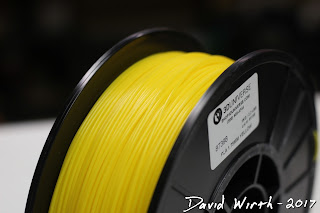
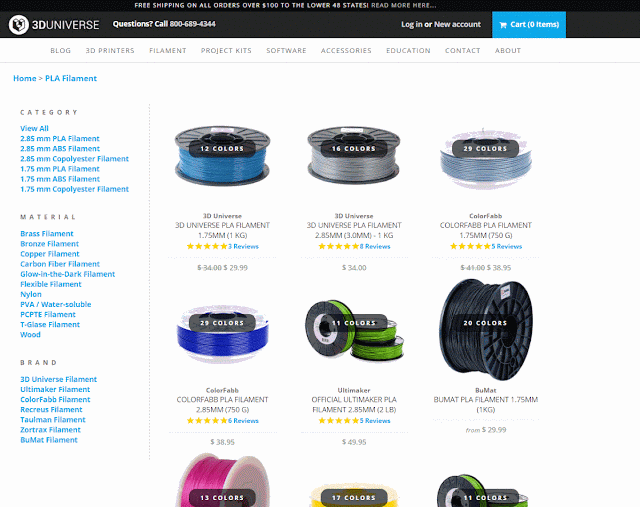
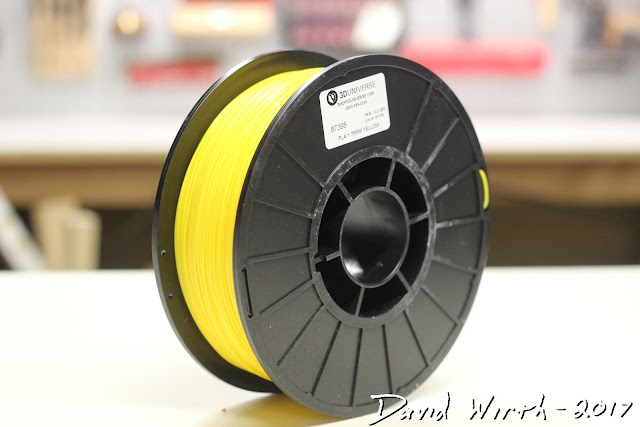







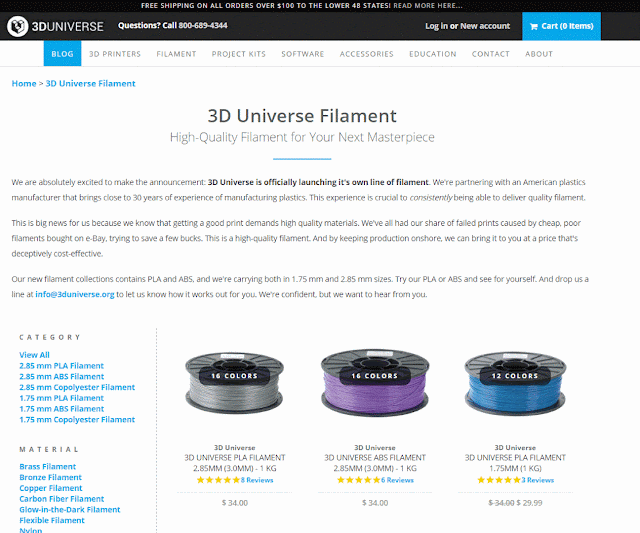

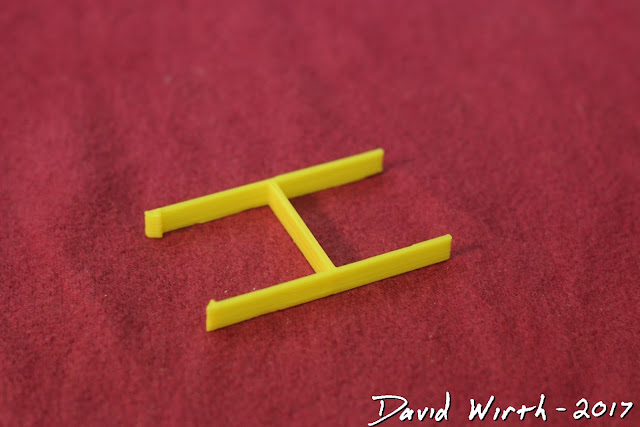







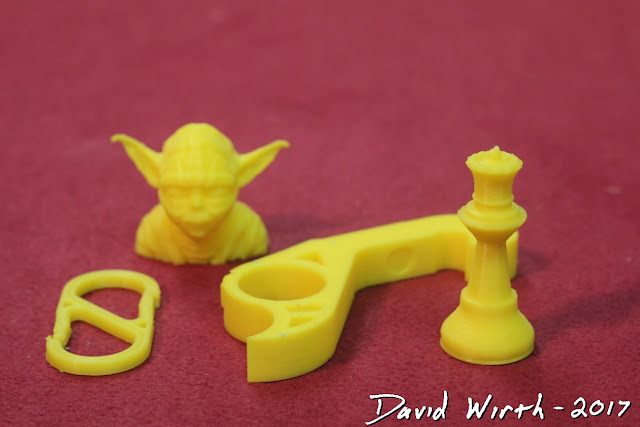





No comments:
Post a Comment